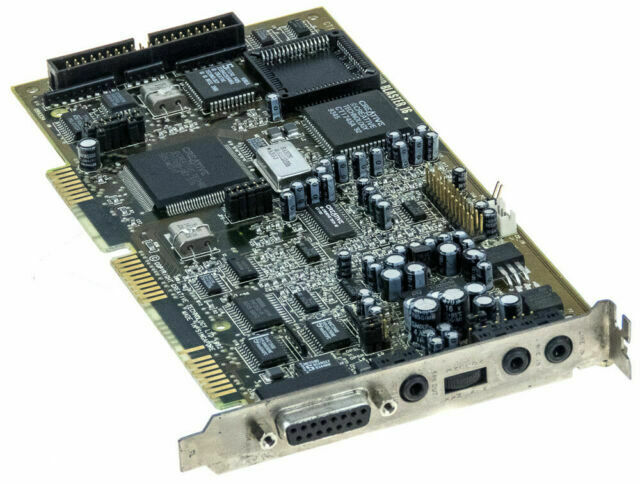Sound Blaster 16 (CT1740, CT1790)
In June 1992, the Sound Blaster 16 was introduced as the successor to the Sound Blaster Pro, though the Pro was sold for a number of years alongside the SB16. The first '16' model was CT1740. For the first time you could get a Sound Blaster card with CD-quality (44 kHz) digital audio sampling.
|
Released | June 1992 |
| Bus | ISA 16-bit | |
| FM Synth | Yamaha YMF262 | |
| Audio Codec | None | |
| Standards | Ad Lib, Sound Blaster, Sound Blaster Pro, Sound Blaster 16 | |
| Ports | Speaker-Out, Mic-In, Line-In Game port |
|
| CD-ROM | Panasonic/Matsushita | |
| Wavetable | Wave Blaster header | |
| Plug & Play | No | |
| FCC ID(s) | IBACT-SB16 (CT1740) IBACT-SB16SONY (CT1790) |
|
| Price | Nov 1992: $349 (Sound Blaster 16 ASP Nov 1993: $129 ( Sound Blaster 16 Basic) |
|
| See Also | Sound Blaster 16 (CT2740) Sound Blaster 16 (CT1750) Sound Blaster Pro 2.0 (CT1600) |
The CT1740 was the first Sound Blaster 16 to be introduced. Some board revisions come with a socket for the optional CT1748A "CSP/ASP" chip. Cards that were originally branded Sound Blaster 16 ASP came with this chip soldered directly on the board. The ones without the CSP/ASP chip were later sold as the Sound Blaster 16 Basic alongside the Sound Blaster 16 MCD and Sound Blaster 16 SCSI-2.
The CT1745 mixer chip is the latest variant of mixer chip found on Creative cards. It succeeded the CT1335 found on the Sound Blaster 2.0, and CT1345 found on the Sound Blaster Pro. CT1745 provided 32 levels of independent software volume control on both left and right channels for Master, Voice, MIDI, CD and Line-In sources, 32 levels for the mono Microphone output source and 4 levels for the mono PC Speaker source. The output mixing path takes signals from the Voice, MIDI, CD, Line-In, Microphone and PC speaker sources. For input mixing, CT1745 is able to record from Mic, CD, Line-In and MIDI sources at the same time - something CT1345 was unable to do.
The CT1740 came with a Panasonic CD-ROM interface. Note that this is *not* a standard IDE interface - Creative partnered with Panasonic to create their own, so it's often referred to as the Creative/Panasonic CD-ROM interface. The CT1740 also retained the thumbwheel volume control on the backplate seen on earlier cards, which is a nice touch.
The CT1790, also called Sound Blaster 16 Sony is the same as the CT1740 but with a Sony CD-ROM interface.
Board Revisions
For CT1740 cards, known board revisions include 49251, 59325, and 59334.
For CT1790 cards, there was only one board revision: 29321.
All cards got the CT1741 DSP chip, though the DSP version may differ - some came with DSP v4.04 while others got v4.05 with no hanging note bug.
All cards got the CT1746B bus interface chip.
Revision 49251 came with the CT1745 mixer, 59334 came with the later CT1745A.
The CT1790 came with the CT1745A mixer. Its DSP version was v4.11 with the hanging note bug.
Competition
By 1992, Creative Labs had a number of competitors looking to cash-in on the ever-growing sound card market. Probably the biggest threat to the Sound Blaster 16 at the time of its launch was MediaVision's ProAudio Spectrum 16, which was the very first 16-bit audio sound card on the market. As was typically the case, the sound quality was much higher over Creative's, and they had learned their lesson over the earlier ProAudio Spectrum by ensuring the PAS16 was backward-compatible with Ad Lib and Sound Blaster.
Another somewhat competitor if you had deeper pockets was the Turtle Beach MultiSound - a card that included wavetable synthesis on-board. The target market for this expensive card really wasn't the same as that for the Sound Blaster 16, being pitched more at professional musicians.
Aztech were very good at undercutting Creative on price, though their cards tended to be aimed at the low end of the market. By the end of 1992, they had the Sound Galaxy BX, Sound Galaxy NX, and Sound Galaxy BX II, with many more just around the corner in 1993.
In the Media
In order to score the sound quality of the Sound Blaster 16 ASP, we conducted a blind taste test with seven judges. Each of our seven listeners were told in detail what to listen for when judging the quality of sound sampled at 11, 22, and 44 kHz frequencies in both 8- and 16-bit mode. The best score it received was a single very good when sampling at 44 kHz, 16-bit mode with U-Law compression. The setting should have produced the best quality, uncompressed sampling at 44 kHz 16-bit mode, was very distorted. Creative Labs visited the InfoWorld test center and tried to solve the problem, unsuccessfully. Creative Labs believes the distortion was caused by incompatibility between its driver and the ASPI4DOS.SYS used with fairly standard Adaptec 1542B SCSI controller.
The Sound Blaster 16 ASP has a 20-voice Yamaha YMF-262 chip for MIDI that produces a relatively disappointing range of sounds. (An optional daughterboard with a 32-voice E-MU chip would be a worthwhile addition if realistic sound synthesis is important. However with the daughterboard installed, you can't use the adjacent slot).
The Sound Blaster 16 ASP comes with a powerful mix of applications, including two programs for sampling in Windows. WaveStudio is limited to sampling and editing what will fit in system memory (about a minute of 44 kHz sampling). If that's enough, you'll enjoy its intuitive interface and strong editing capabilities. Soundo'LE is the appropriate application for creating longer samples and embedding them into OLE-aware applications. The Sound Blaster 16 mixer, which you can access from Soundo'LE's menus, is very powerful and easy to use." InfoWorld, 11 Jan 1993

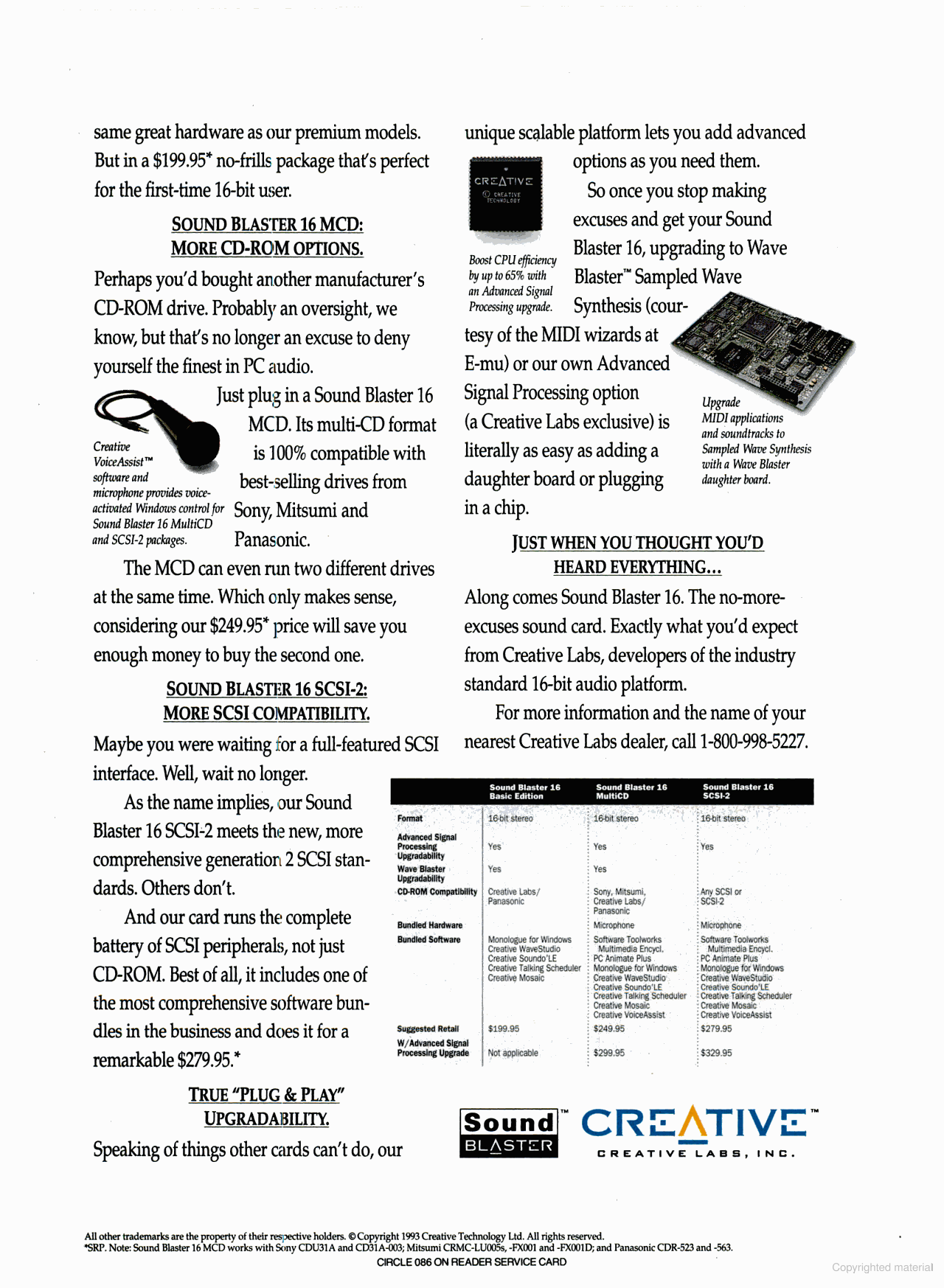

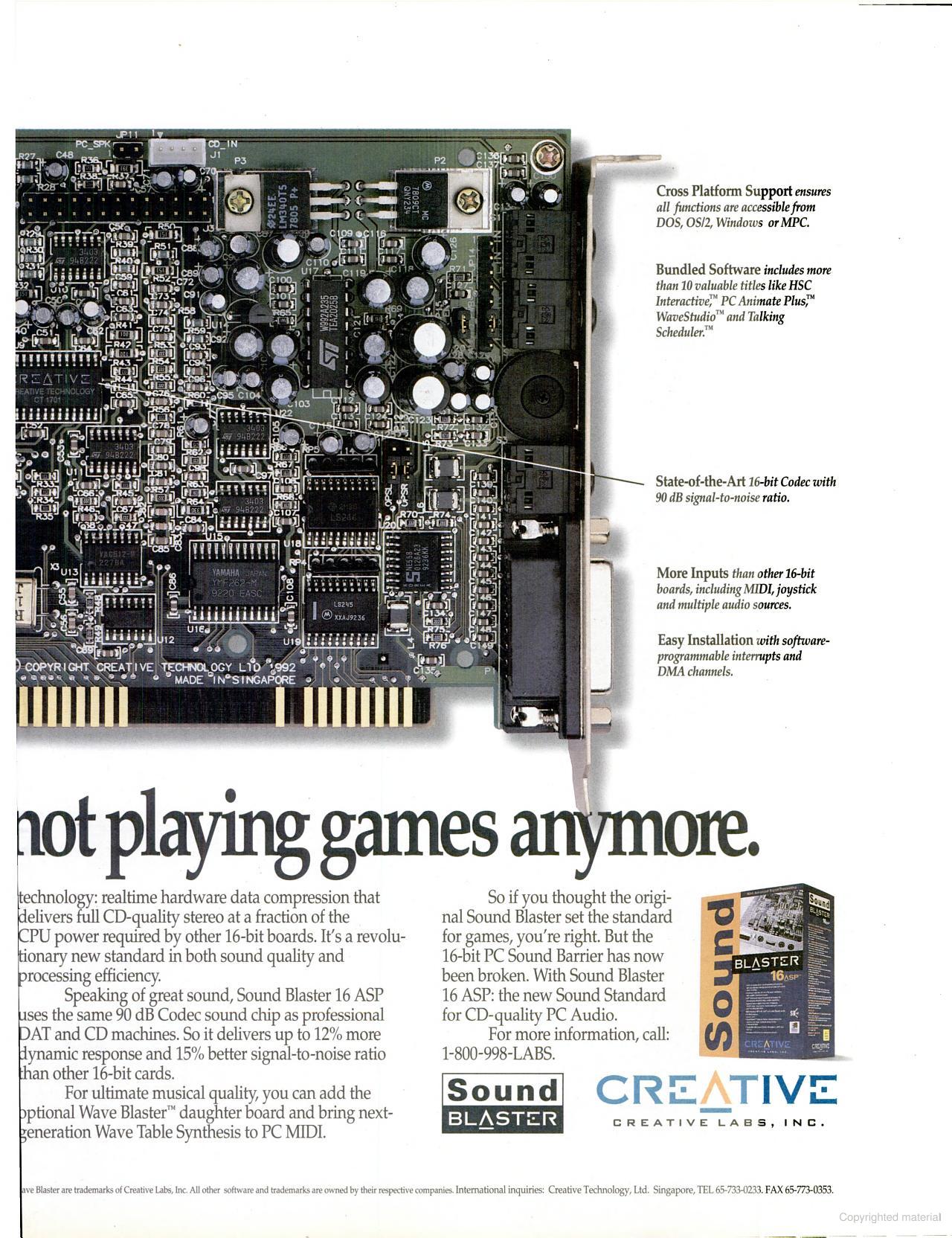
Some Sound Blaster 16 adverts at the time of launch (1992)
Setting it Up
Downloads
Operation Manual Get in touch if you can provide this missing item! |
DOS and Windows 3.1 Utility Disks The original Sound Blaster 16 DOS and Windows 3.1 installation disks, marked Sound Blaster 16 |
. DOS and Windows 3.1 Utility Disks The original Sound Blaster 16/AWE DOS and Windows 3.1 installation disks, marked SDR-31STD-1-US (Revision 1). |
More Pictures
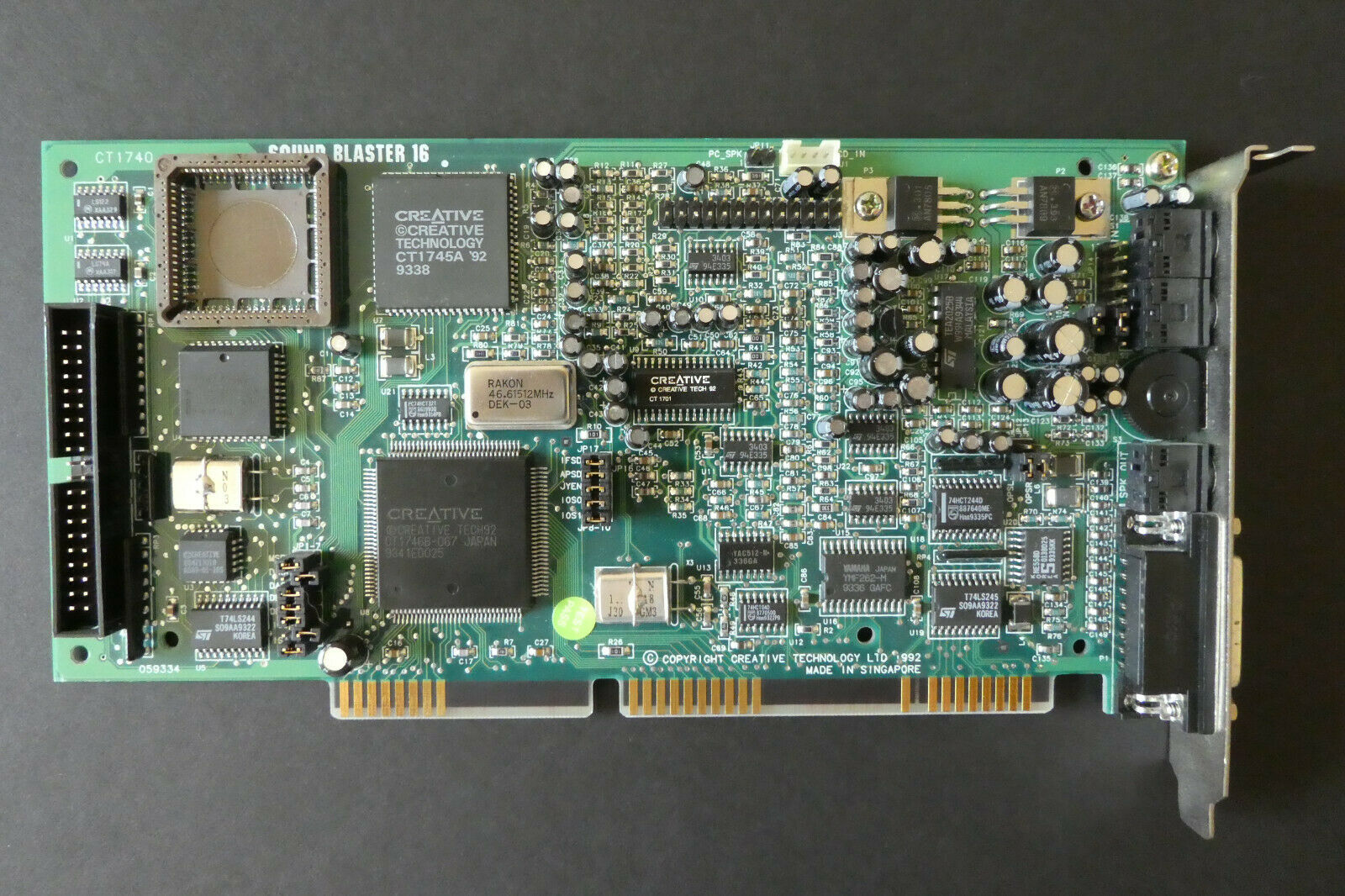
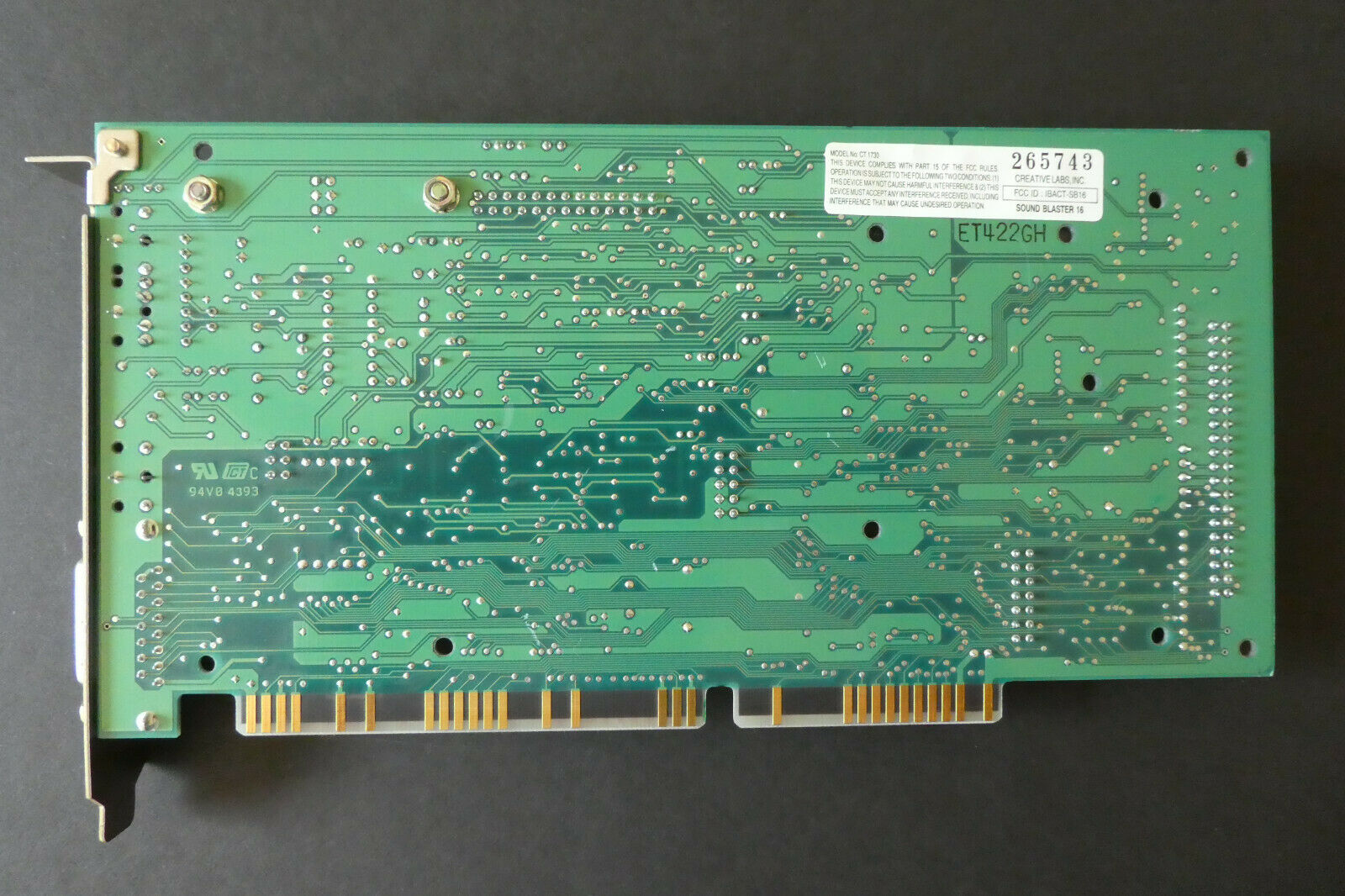
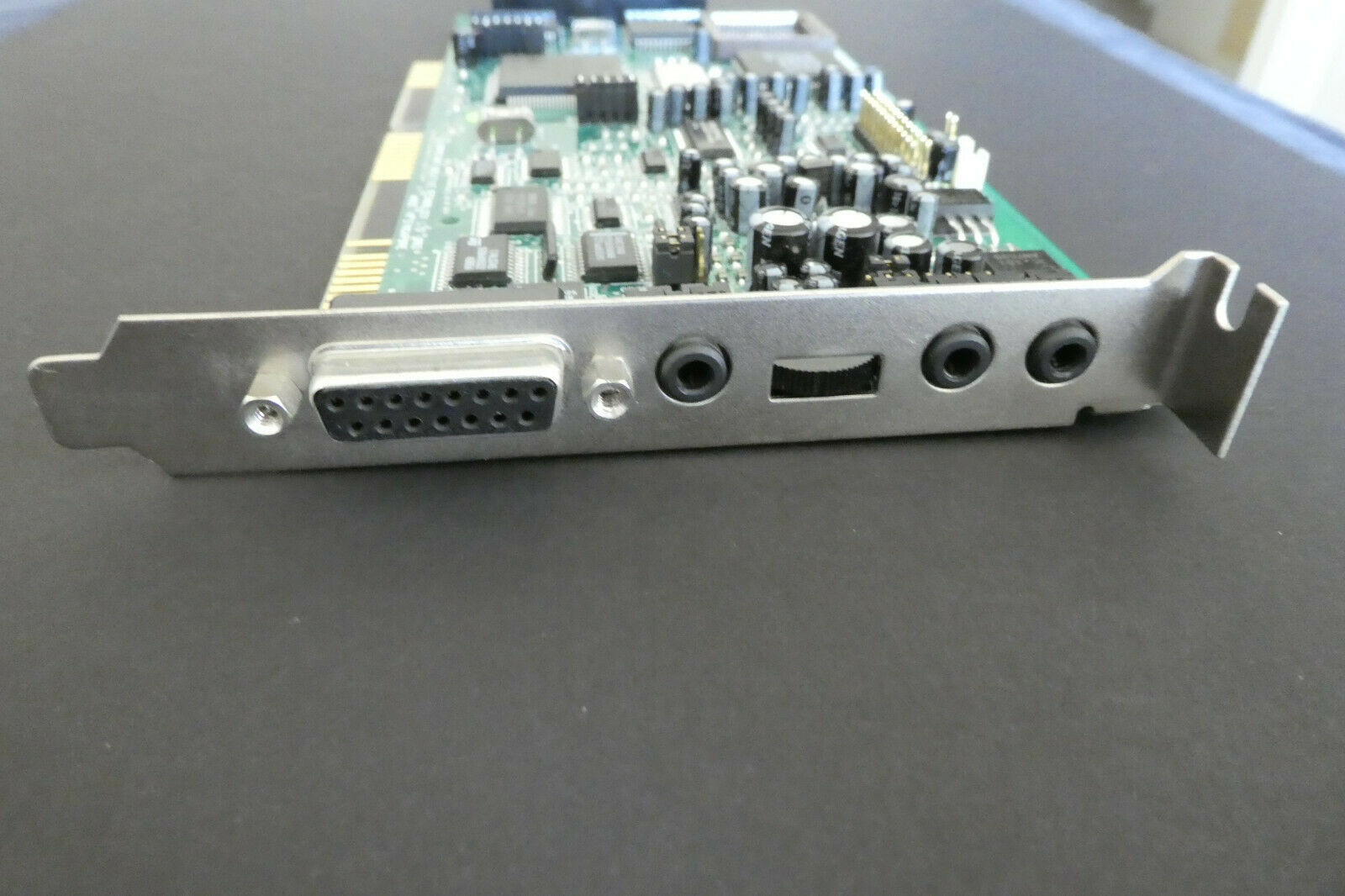
Sound
Blaster 16 (CT1740, board revision 59334)

Sound Blaster 16 (CT1740, board revision 49251)
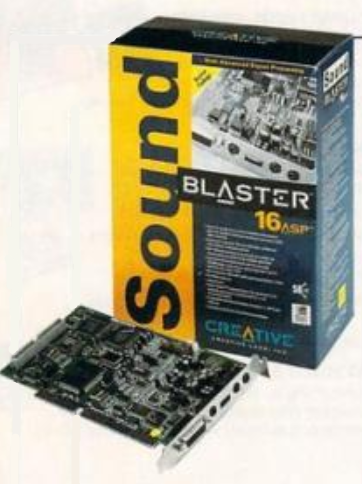
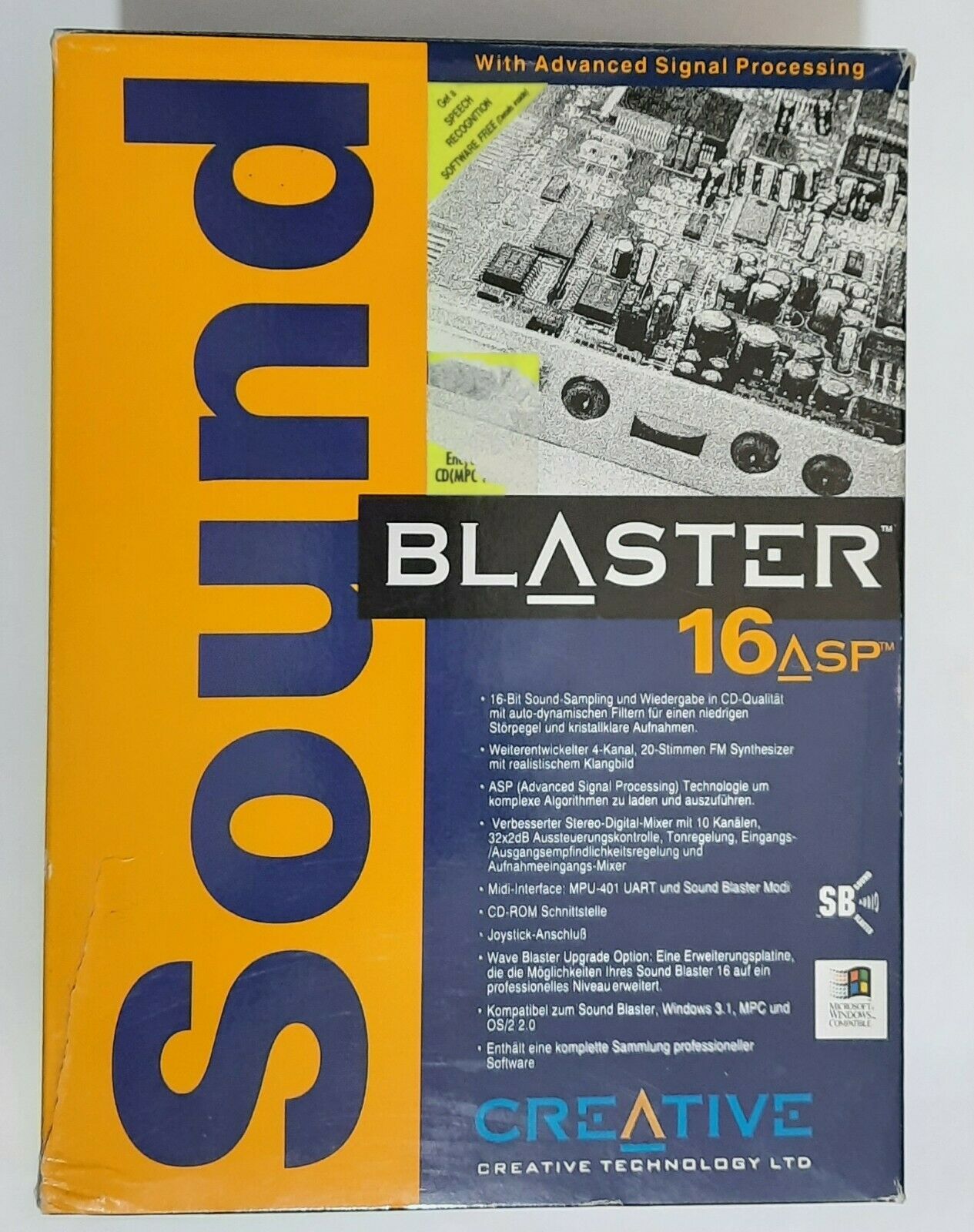

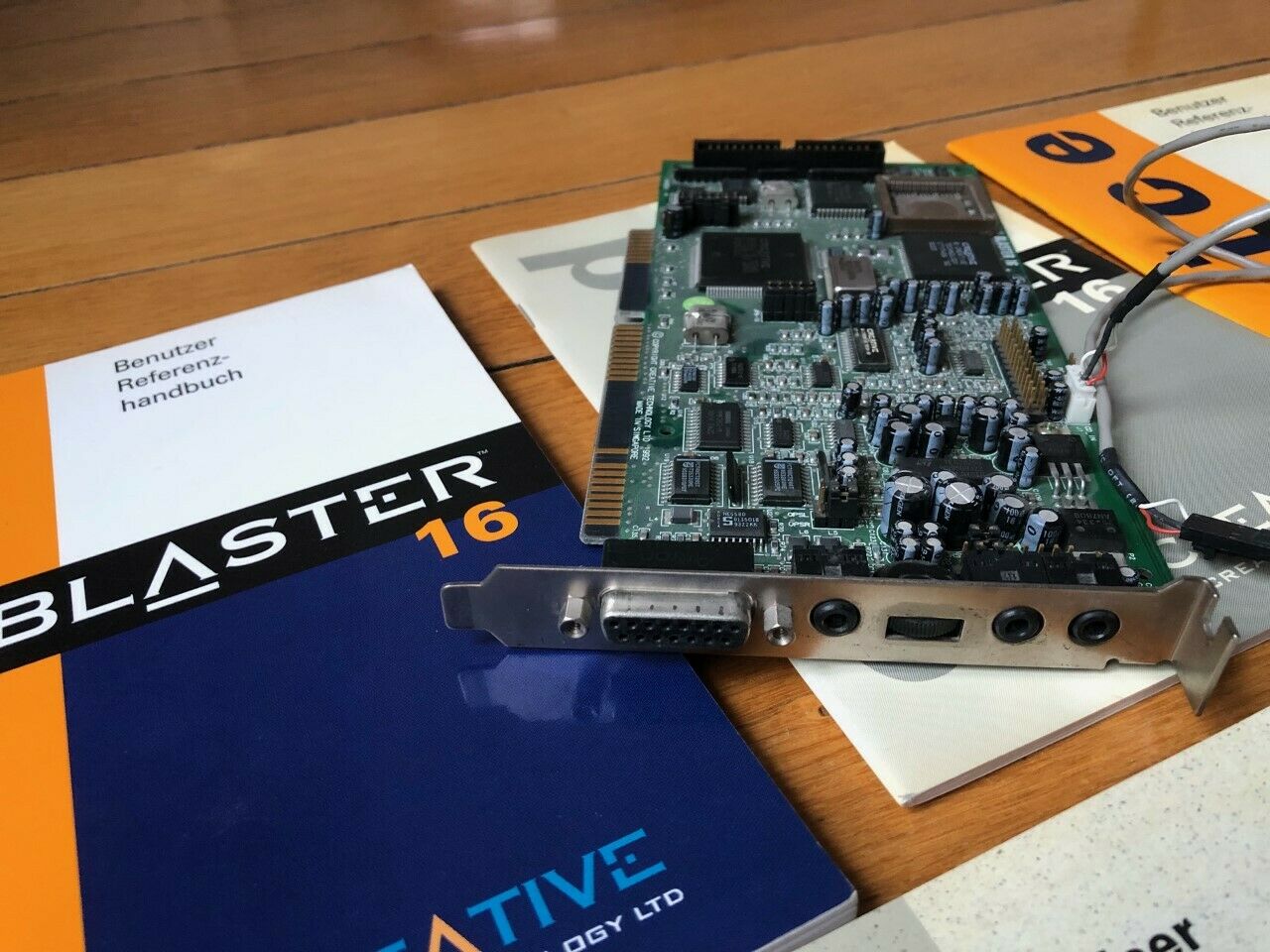
The Sound Blaster 16 ASP Box and Contents (CT1740)
.jpg)
.jpg)
.jpg)
.jpg)
DOS Days contributor Tuomas Toropainen's complete Sound Blaster 16 ASP package with board revision 59325 (soldered-in ASP chip and DSP v4.05)
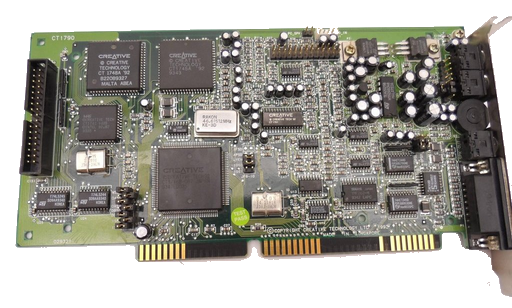
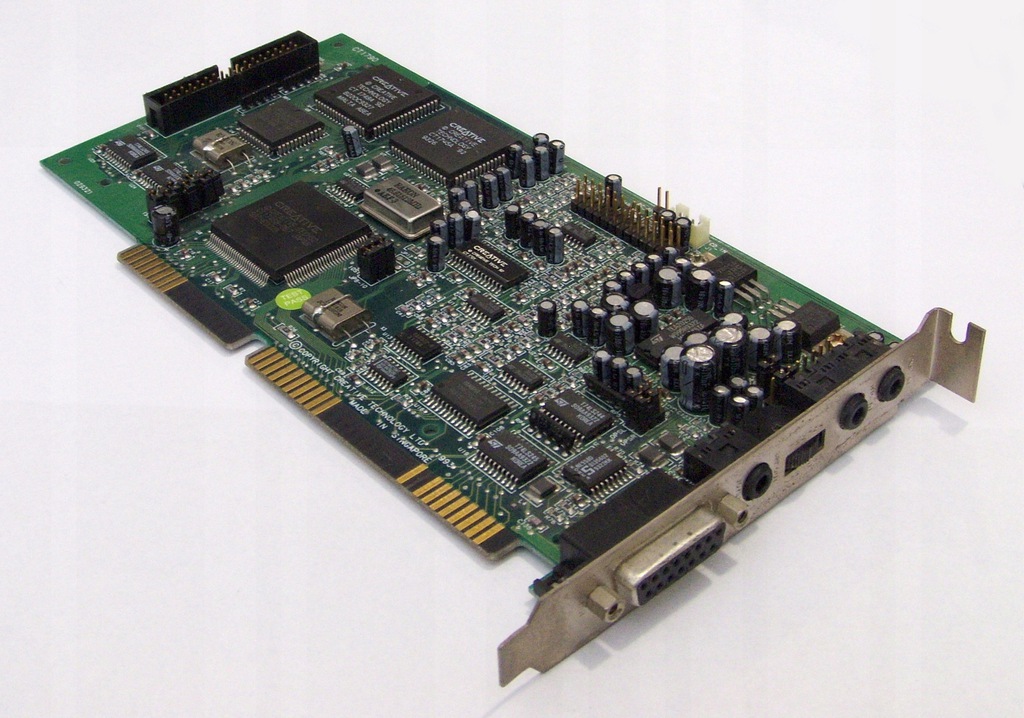
The Sound Blaster 16 Sony (CT1790, board revision 29321)

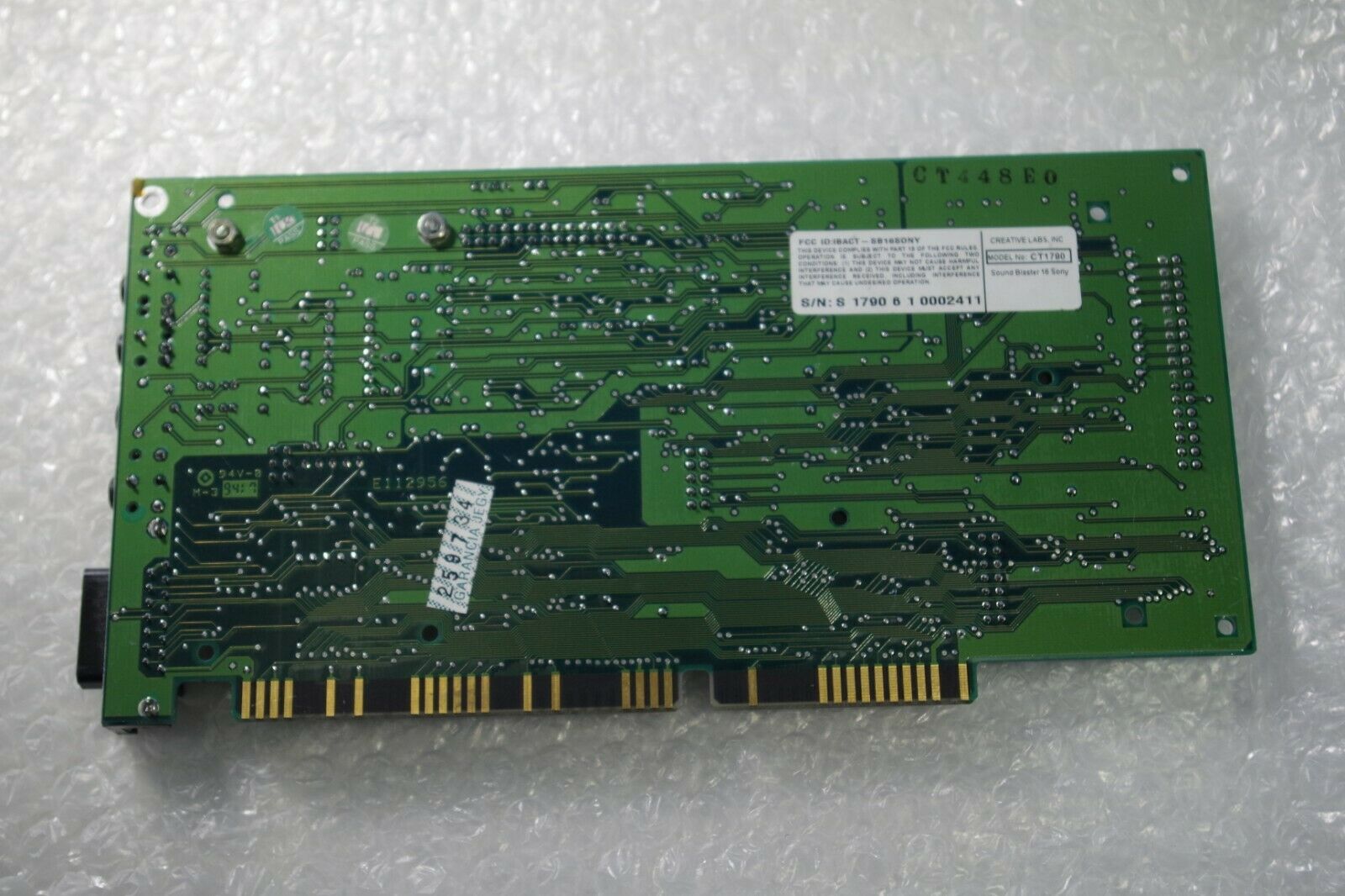

Another Sound Blaster 16 Sony (CT1790, board revision 29321)
